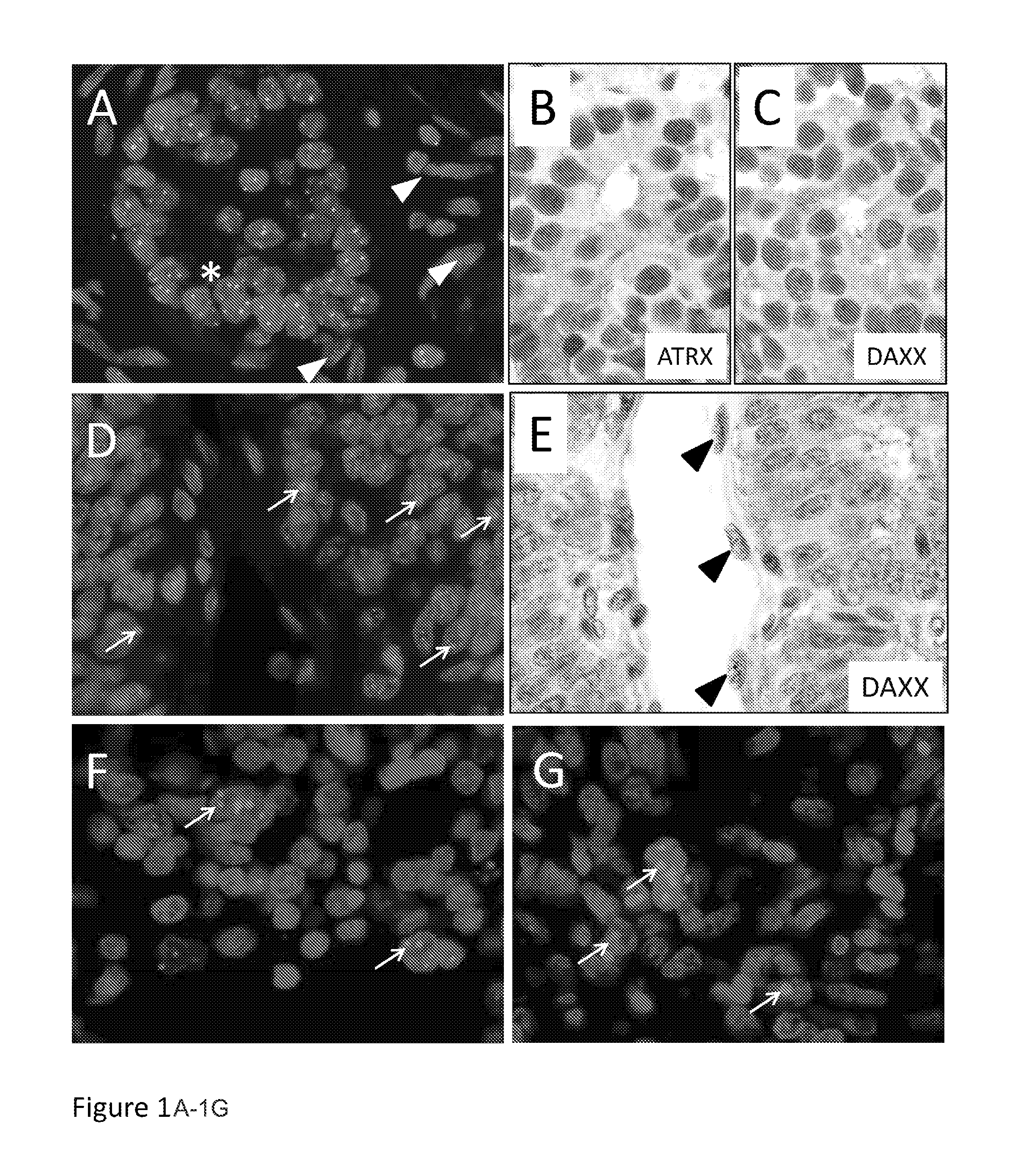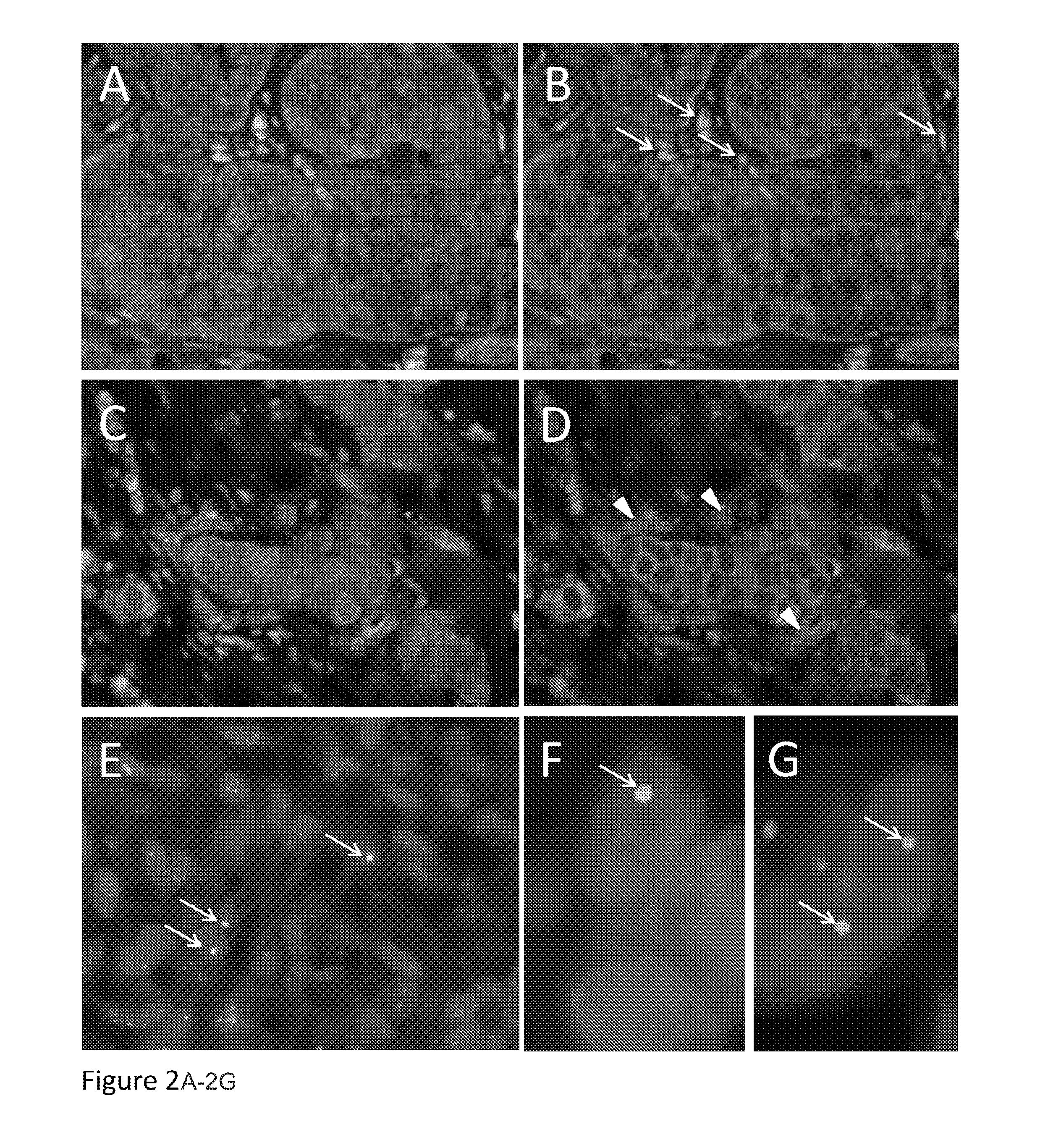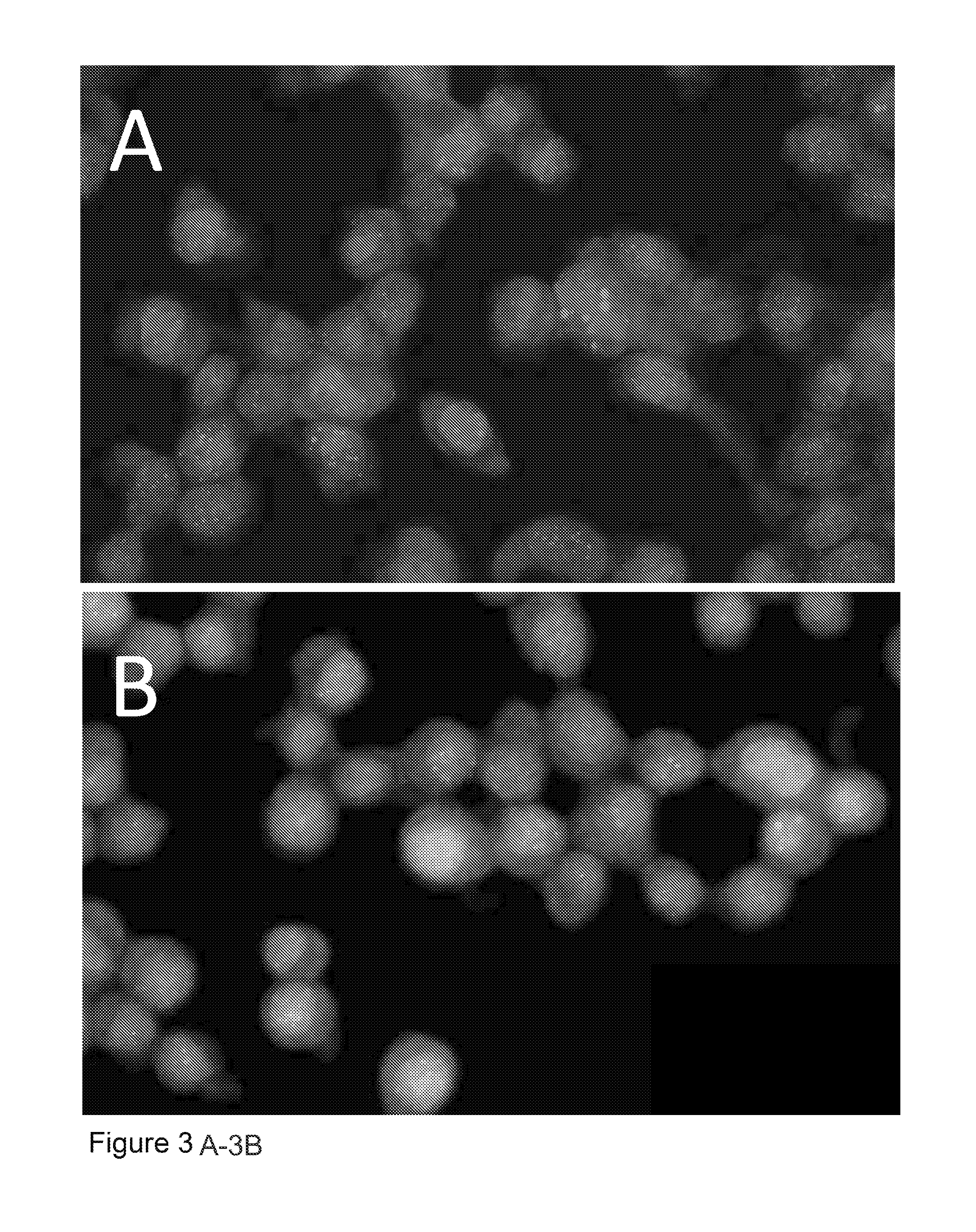Somatic mutations in atrx in brain cancer
a brain cancer and somatic mutation technology, applied in the field of cancer, can solve problems such as limiting cellular proliferative capacity, and achieve the effect of inhibiting atrx function or expression
- Summary
- Abstract
- Description
- Claims
- Application Information
AI Technical Summary
Benefits of technology
Problems solved by technology
Method used
Image
Examples
example 1
ATRX and DAXX Gene Mutations Correlate with ALT-Positivity
[0022]Given the potential role of ATRX and DAXX in modulating telomeric chromatin, we evaluated telomere status in pancreatic neuroendocrine tumors (PanNETs) with known ATRX and DAXX mutational status. Telomere-specific fluorescence in situ hybridization (FISH) was used to directly assess the telomeres in PanNETs. Neoplasms with ALT are readily distinguishable by large ultra-bright telomere FISH signals—a nearly universal feature of ALT-positive cell populations.(25) Although telomere FISH signals from these individual bright foci have often been shown to co-localize with PML protein, this localization is not as reliable as the strength of the FISH signals and was not used for classification in our study.(26-28)
[0023]Twenty-five of the 41 PanNETs (61%) examined by telomere FISH displayed evidence of ALT (Table 1, FIG. 1). Importantly, ALT was not observed in any of the surrounding non-neoplastic cells, including stromal fibro...
example 2
ATRX Mutations in Cancers of the CNS
[0026]To ascertain whether ATRX and DAXX gene mutations might be more generally associated with the ALT-phenotype, we examined 447 tumors of other types. We identified a low to moderate frequency of ATRX mutations in cancers of the CNS. Specifically, mutations were detected in 2 of 18 (11.1%) pediatric GBM, 8 of 123 (6.5%) adult GBM, 1 of 13 (7.7%) oligodendrogliomas, and 1 of 65 (1.5%) medulloblastomas. No mutations in either ATRX or DAXX were identified in 11 adult neuroblastomas, or in 25 ovarian adenocarcinomas, 96 breast adenocarcinomas and 96 pancreatic adenocarcinomas. (Table 2).
[0027]Further, ATRX mutations were found in anaplastic astrocytomas (41%), astrocytomas (29%), anaplastic oligoastrocytomas (20%), oliogoastrocytomas (33%), anaplastic oligogliomas (7%), and oligogliornas (14%). These mutations were highly associated with mutations in IDH1 / 2 and TP53.
example 3
[0028]To determine if the ALT status of these additional tumor types also correlated with the presence of somatic ATRX mutations, we performed telomere FISH as described above on 8 ATRX mutant cases in which tumor material was available. In each of the eight cases, extremely bright telomeric foci indicating ALT were identified in the neoplastic cells but not in the non-neoplastic cells surrounding them (examples in FIGS. 1 and 2). Immunolabeling with antibodies to DAXX or ATRX showed that these tumors had lost nuclear expression of ATRX. As controls, we studied 23 ATRX and DAXX-wild type tumors of the same types with the identical techniques. None of the tumors without ATRX or DAXX mutations demonstrated the ALT phenotype by telomere FISH and all 23 retained robust nuclear labeling for both ATRX and DAXX.
PUM
| Property | Measurement | Unit |
|---|---|---|
| nucleic acid analysis | aaaaa | aaaaa |
| telomere stability | aaaaa | aaaaa |
| length | aaaaa | aaaaa |
Abstract
Description
Claims
Application Information
 Login to View More
Login to View More - R&D
- Intellectual Property
- Life Sciences
- Materials
- Tech Scout
- Unparalleled Data Quality
- Higher Quality Content
- 60% Fewer Hallucinations
Browse by: Latest US Patents, China's latest patents, Technical Efficacy Thesaurus, Application Domain, Technology Topic, Popular Technical Reports.
© 2025 PatSnap. All rights reserved.Legal|Privacy policy|Modern Slavery Act Transparency Statement|Sitemap|About US| Contact US: help@patsnap.com



